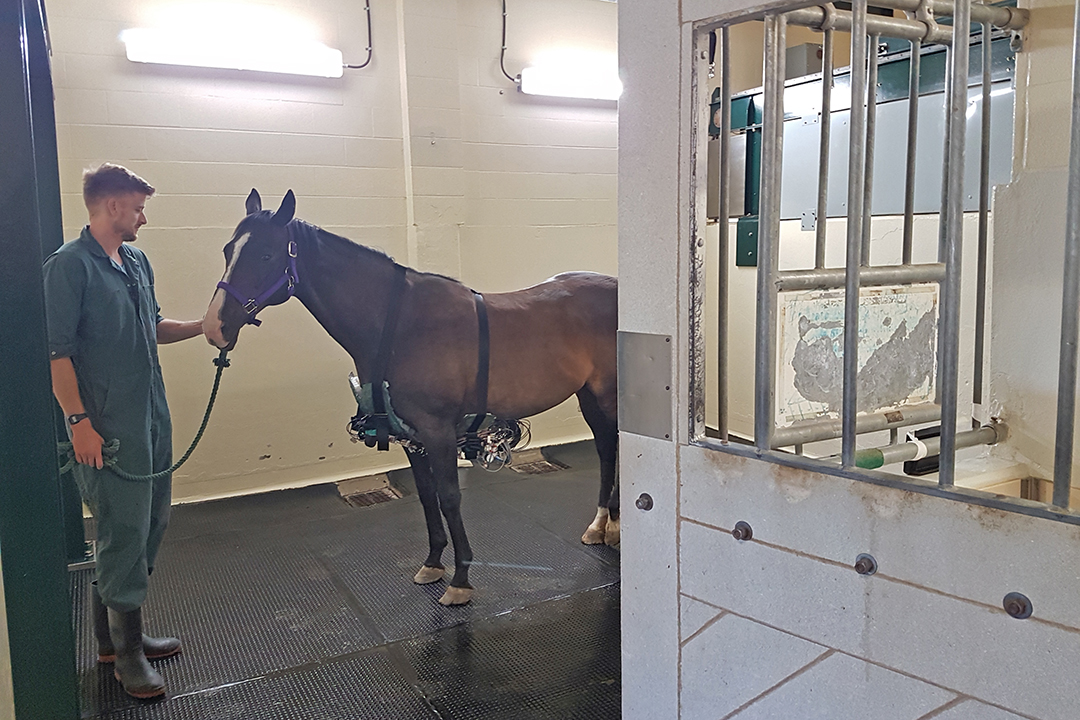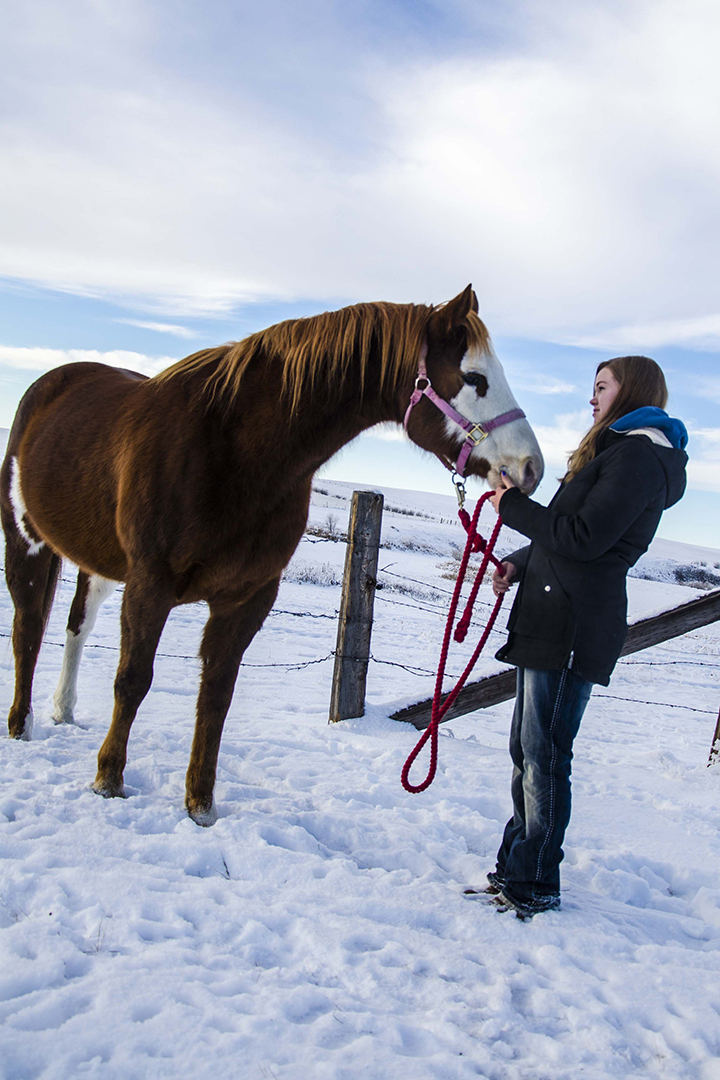
Lifesaving support
When a person breaks a leg, it’s highly unlikely that this injury would lead to death. But when a horse injures its leg, the all-too-common outcome is euthanasia.
By Brendan Loewen
The heartbreaking experience of losing an equine companion to a leg injury is a familiar one for Samantha Steinke, a graduate student in biomedical engineering at the University of Saskatchewan. In 2016, her horse Cash stepped on a piece of metal and severed a tendon in his lower leg. Soon after, he had to be euthanized.
“If there was an ability to get him to recover, I would have given anything,” says Steinke. “People with animals usually understand that that connection is unexplainable … I don’t have kids, so I don’t know. But to me, [he was] like my kid – having to put my kid out of [his] misery … I would have done anything to save him.”
This experience could have been solely negative, but for Steinke, her pain in losing one of her closest friends has fueled a passion to help find a solution. As a first step, Steinke joined a research group at the Western College of Veterinary Medicine (WCVM) that’s working to build a better rehabilitation harness for equine patients recovering from serious limb injuries.
Led by large animal internal medicine specialist Dr. Julia Montgomery, the WCVM research group had previously teamed up with RMD Engineering Inc., a Saskatoon engineering firm, to develop a new mechanical harness design. That project began with the development and installation of a dynamic horse lift system by RMD at the WCVM in 2014.
The hope is that veterinarians can use RMD’s new harness design with the WCVM’s computerized dynamic lift to assist in the recovery of horses with leg injuries.
The reason why limb injuries are so deadly for horses is because of the way they’re built: the equine species requires all four legs to support their enormous weight. Another complicating factor is that when one limb is injured, the horse’s weight is distributed disproportionately to the other three legs. The extra weight can often lead to secondary complications, such as supporting limb laminitis.
Until RMD’s dynamic horse lift system was developed, ambulatory support of horses was limited to mechanical lifts and rescue slings. However, these types of slings are meant for short-term use, such as applications in rescue or recovery from anaesthesia.
Combining experts in veterinary medicine and engineering is the perfect dynamic for developing the new rehabilitation harness. And for Steinke, working within both areas is something special: “It’s amazing to be involved in a project with such variety and discipline.”
To combat complications seen with other commercially available slings, WCVM researchers and RMD plan to develop their harness in two stages. They’re now working on developing the front portion of the harness, which includes a novel breastplate system with inflatable air cushions. They hope that this system will minimize the development of pressure sores on horses during long-term use.
The new harness has undergone multiple adjustments and redesigns. The newest version, based around the breastplate, has team members extremely excited about its potential. This is particularly true for Steinke who hopes that her dream of helping to make a difference may have a chance of becoming a reality.
“There are many applications that we can use [the harness] in. It just has endless opportunities.”
But there’s still a lot of work to do, points out Steinke.
“This is all stuff that’s never been done [before], so we don’t know what’s going to happen. We hope it’s going to work, and we are very optimistic in it working. I think it will [work], but there is always that chance that it won’t.”
It could be many months or even years before the rehabilitative harness is perfected, but throughout the process, the goal will always remain the same — finding a way to give horses and their owners a second chance.
“That is what everybody is hoping for — to find a solution — and [to] be able to treat horses that weren’t able to be treated before,” says Steinke.
Brendan Loewen of Radville, Sask., is a second-year veterinary student at the Western College of Veterinary Medicine (WCVM) and the 2018 Townsend Equine Health Research Fund summer research student. His story is part of a series of articles written by WCVM summer research students